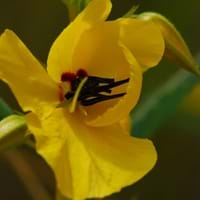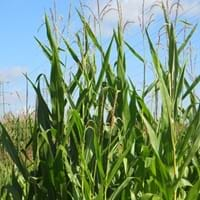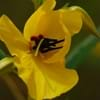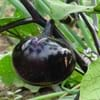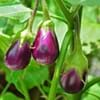Origin
Mediterranean
Hybrid origin, North America, Central America, South America
Types
Chamaecrista fasciculata Greene fasciculata, Chamaecrista fasciculata Greene macrosperma
Field Corn, Sweet Corn, Baby Corn, Indian Corn
Number of Varieties
Not Available
Habitat
Dry areas, Open areas, Upland sand prairies, Upland savannas
Clay soil areas, Loamy soils, Sandy areas
USDA Hardiness Zone
Not Available
Not Available
Sunset Zone
A1, A2, A3, H1, H2, 1a, 1b, 2a, 2b, 3a, 3b, 4, 5, 6, 7, 8, 9, 10, 11, 12, 13, 14, 15, 16, 17, 18, 19, 20, 21, 22, 23, 24
A1, A2, A3, H1, H2, 1a, 1b, 2a, 2b, 3a, 3b, 4, 5, 6, 7, 8, 9, 10, 11, 12, 13, 14, 15, 16, 17, 18, 19, 20, 21, 22, 23, 24
Habit
Vining/Climbing
Upright/Erect
Minimum Width
Not Available
Flower Color
White, Pink, Lavender
Not Available
Flower Color Modifier
Bicolor
Bicolor
Fruit Color
Green
White, Yellow, Light Yellow, Peach
Leaf Color in Spring
Green, Sea Green, Gray Green
Green, Dark Green
Leaf Color in Summer
Not Available
Green, Dark Green
Leaf Color in Fall
Green, Blue Green, Gray Green
Green, Dark Green
Leaf Color in Winter
Green, Blue Green, Gray Green
Green, Dark Green
Leaf Shape
Compound
Long Linear
Plant Season
Spring, Fall, Winter
Spring, Summer, Fall
Sunlight
Full Sun, Partial Sun
Full Sun
Growth Rate
Fast
Very Fast
Type of Soil
Clay, Loam, Sand
Loam
The pH of Soil
Neutral
Neutral
Soil Drainage
Well drained
Well drained
Bloom Time
Early Spring, Spring, Late Spring, Fall, Late Fall, Early Winter, Winter, Late Winter
Indeterminate
Tolerances
Drought
Drought
Where to Plant?
Ground
Ground
How to Plant?
Seedlings
Seedlings
Plant Maintenance
Medium
Medium
Watering Requirements
Needs more water during establishment, Water deeply about once a week
Average Water Needs, Do Not over Water, Needs watering once a week, Never Over-water, Over-head watering
In Summer
Lots of watering
Lots of watering
In Spring
Moderate
Moderate
In Winter
Average Water
Average Water
Soil Type
Clay, Loam, Sand
Loam
Soil Drainage Capacity
Well drained
Well drained
Sun Exposure
Full Sun, Partial Sun
Full Sun
Pruning
Remove damaged leaves, Remove dead branches, Remove dead leaves
Remove damaged leaves, Remove dead branches, Remove dead leaves
Fertilizers
All-Purpose Liquid Fertilizer
Nitrogen, Phosphorous, Potassium, Well-rotted manure
Pests and Diseases
Not Available
Red blotch
Plant Tolerance
Drought
Drought
Flowers
Showy
Insignificant
Flower Petal Number
Single
Not Available
Foliage Texture
Medium
Coarse
Foliage Sheen
Matte
Glossy
Attracts
Not Available
Not Available
Allergy
Mild Allergen
Asthma, Diarrhea, Headache, Nausea, Runny nose, Skin rash, sneezing, Vomiting
Aesthetic Uses
Cottage Garden
Not Used For Aesthetic Purpose
Beauty Benefits
Not Available
Good for skin and hair, Improve hair condition, Improve skin condition
Environmental Uses
Air purification
Food for animals, Food for birds, Food for insects
Medicinal Uses
Nausia, Urinary tract problems
Anemia, Antioxidants, Diabetes, Improve heart health, Indigestion, Nutrients
Part of Plant Used
Leaves, Seeds
Fruits
Other Uses
Dried heads are used in floristry, Food for animals, Food for insects
Economic Purpose, Employed in herbal medicine, Oil is used as an industrial solvent, Used As Food, Used for its medicinal properties
Used As Indoor Plant
No
No
Used As Outdoor Plant
Yes
Yes
Garden Design
Container, Edible, Herb, Vegetable, Vine
Edible, Herb, Vegetable
Botanical Name
Chamaecrista fasciculata
ZEA mays
Common Name
Sleeping Plant, prairie partridge pea, showy partridge pea, prairie senna, large-flowered sensitive-pea,dwarf cassia, partridge pea senna, locust weed,golden cassia
Maize
In Hindi
Partridge Pea
मक्का
In German
Partridge Pea
Mais
In French
Partridge Pea
Blé
In Spanish
Partridge Pea
Maíz
In Greek
πέρδικα μπιζέλι
Καλαμπόκι
In Portuguese
Partridge Pea
Milho
In Polish
Partridge Pea
Kukurydza
In Latin
Partridge Pea
corn
Phylum
Vascular plant
Streptophyta
Class
Magnoliopsida
Liliopsida
Clade
Angiosperms, Eudicots, Rosids
Angiosperms, Commelinids, Monocots
Tribe
Cassieae
Andropogoneae
Subfamily
Not Available
Panicoideae
Number of Species
Not Available
Not Available
Importance of Partridge Pea and Corn
Want to have the most appropriate plant for your garden? You might want to know the importance of Partridge Pea and Corn. Basically, these two plants vary in many aspects. Compare Partridge Pea and Corn as they differ in many characteristics such as their life, care, benefits, facts, etc. Every gardener must at least have the slightest clue about the plants he wants to plant in his garden. Compare their benefits, which differ in many ways like facts and uses. The medicinal use of Partridge Pea is Nausia and Urinary tract problems whereas of Corn is Anemia, Antioxidants, Diabetes, Improve heart health, Indigestion and Nutrients. Partridge Pea has beauty benefits as follows: Not Available while Corn has beauty benefits as follows: Not Available.
Compare Facts of Partridge Pea vs Corn
How to choose the best garden plant for your garden depending upon its facts? Here garden plant comparison will help you to solve this query. Compare the facts of Partridge Pea vs Corn and know which one to choose. As garden plants have benefits and other uses, allergy is also a major drawback of plants for some people. Allergic reactions of Partridge Pea are Mild Allergen whereas of Corn have Asthma, Diarrhea, Headache, Nausea, Runny nose, Skin rash, sneezing and Vomiting respectively. Having a fruit bearing plant in your garden can be a plus point of your garden. Partridge Pea has showy fruits and Corn has showy fruits. Also Partridge Pea is not flowering and Corn is not flowering . You can compare Partridge Pea and Corn facts and facts of other plants too.
